Variations in nucleus accumbens dopamine associated with individual differences in maternal behavior in the rat
- PMID: 15115806
- PMCID: PMC6729285
- DOI: 10.1523/JNEUROSCI.5322-03.2004
Variations in nucleus accumbens dopamine associated with individual differences in maternal behavior in the rat
Abstract
Lactating rats exhibit stable individual differences in pup licking/grooming. We used in vivo voltammetry to monitor changes in extracellular dopamine (DA) in the nucleus accumbens (n. Acc) shell of lactating rats interacting with pups and found that (1) the DA signal increased significantly with pup licking/grooming; (2) the onset of such increases preceded pup licking/grooming; and (3) the magnitude and duration of the increase in the DA signal were significantly correlated with the duration of the licking/grooming bout. In females characterized on the basis of behavioral observations as high-licking/grooming mothers, the magnitude of the increase in the DA signal associated with licking/grooming was significantly greater than in low-licking/grooming dams. Dopamine transporter binding in the n. Acc was increased in low-compared with high-licking/grooming mothers. Injection of the selective DA uptake inhibitor GBR 12909 [1-(2-(Bis-(4-fluorophenyl)methoxy)ethyl)-4-(3 phenypropyl)piperazine dihydrochloride] (5 mg/kg, s.c.) increased the DA signal in the n. Acc and pup licking/grooming in low-licking/grooming mothers to levels comparable with those observed in high-licking/grooming dams. Receptor autoradiographic studies showed elevated levels of D1 and D3 receptors in the n. Acc shell region in high-licking/grooming dams. These results suggest that high- and low-licking/grooming dams differ in mesolimbic dopaminergic activity associated with mother-pup interactions. Such differences may serve as neural substrates for individual differences in the motivational component of maternal behavior.
Figures

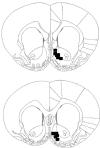
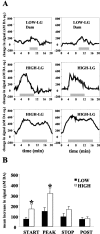




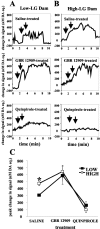
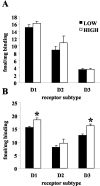
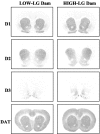
References
-
- Andersen PH (1989) The dopamine inhibitor GBR 12909: selectivity and molecular mechanism of action. Eur J Pharmacol 166: 493-504. - PubMed
-
- Bakowska JC, Morrell JI (1995) Quantitative autoradiographic analysis of D1 and D2 dopamine receptors in rat brain in early and late pregnancy. Brain Res 703: 191-200. - PubMed
-
- Baumann MH, Ayestas MA, Sharpe LG, Lewis DB, Rice KC, Rothman RB (2002) Persistent antagonism of methamphetamine-induced dopamine release in rats pretreated with GBR12909 decanoate. J Pharmacol Exp Ther 301: 1190-1197. - PubMed
-
- Breton C, Zingg HH (1997) Expression and region-specific regulation of the oxytocin receptor gene in rat brain. Endocrinology 138: 1857-1862. - PubMed
-
- Breton C, Pechoux C, Morel G, Zingg HH (1995) Oxytocin receptor messenger ribonucleic acid: characterization, regulation, and cellular localization in the rat pituitary gland. Endocrinology 136: 2928-2936. - PubMed
Publication types
MeSH terms
Substances
Grants and funding
LinkOut - more resources
Full Text Sources
Miscellaneous
